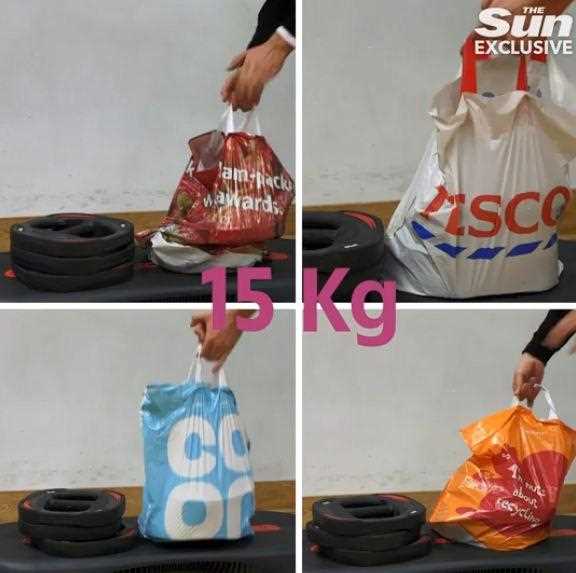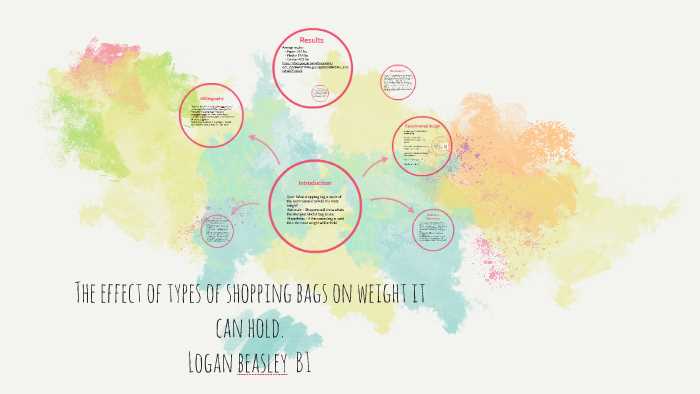
When it comes to shopping, one of the most important factors to consider is the weight capacity of the bags we use. Whether you prefer reusable tote bags or the trusty plastic bags provided by stores, knowing how much weight they can handle is crucial to avoid any mishaps or accidents.
Reusable tote bags have gained immense popularity in recent years due to their eco-friendly nature. However, not all tote bags are created equal. The weight capacity of these bags can vary depending on factors such as the material, stitching, and design. It’s essential to choose a tote bag that is sturdy enough to carry your shopping items without breaking or tearing.
On the other hand, plastic bags provided by stores may seem thin and flimsy, but they can surprise you with their weight-carrying capacity. Due to their durable construction, these bags can handle a significant amount of weight without any issue. However, it’s important to remember that plastic bags are not meant to be reused multiple times and contribute to environmental pollution.
So, how much weight can these shopping bags hold? The answer may vary, but it’s generally recommended to not exceed 20 pounds (9 kilograms) for most tote bags. Plastic bags, on the other hand, have been found to hold up to 15 pounds (7 kilograms) on average. However, it’s always a good idea to check the specific guidelines provided by the manufacturer for each type of bag.
In conclusion, being aware of the weight capacity of shopping bags is essential to ensure a smooth and hassle-free shopping experience. Whether you opt for reusable tote bags or use the plastic bags provided by stores, it’s important to choose bags that can handle the weight of your items. By doing so, you can avoid any accidents or inconveniences and make your shopping trips a breeze.
- Factors That Affect the Weight Capacity of Shopping Bags
- Material
- Stitching and Reinforcement
- Handle Design
- Size and Shape
- Intended Use
- Different Types of Shopping Bags and Their Weight Capacities
- How to Determine the Weight Capacity of a Shopping Bag
- Check the label:
- Inspect the material:
- Consider the handle design:
- Test with a known weight:
- Common Mistakes When Overloading Shopping Bags
- 1. Ignoring Weight Limits
- 2. Not Distributing Weight Properly
- 3. Using Old or Damaged Bags
- Importance of Knowing the Weight Capacity of Shopping Bags
- Tips for Safely Carrying Heavy Items in Shopping Bags
- undefined
- What is the weight capacity of standard plastic shopping bags?
- Are reusable shopping bags stronger than plastic bags?
- Can paper bags hold more weight than plastic bags?
- What factors can affect the weight capacity of a shopping bag?
- Is it safe to carry heavy items in a shopping bag?
- What is the weight capacity of most shopping bags?
- Are reusable shopping bags stronger than plastic bags?
Factors That Affect the Weight Capacity of Shopping Bags
There are several factors that can affect the weight capacity of shopping bags. Understanding these factors can help you choose the right bag for your needs and avoid any potential issues.
Material
The material of the shopping bag plays a critical role in determining its weight capacity. Bags made from lightweight materials like plastic or thin fabric may have a lower weight capacity compared to bags made from sturdy materials like canvas or nylon. It is important to consider the material of the bag when planning to carry heavy items.
Stitching and Reinforcement
The strength of the stitching and reinforcement of the shopping bag is another important factor to consider. Bags with well-stitched seams and reinforced handles are likely to have a higher weight capacity as they can better withstand the pressure exerted by heavy items. On the other hand, bags with weak stitching and minimal reinforcement may have a lower weight capacity and could potentially break or tear when carrying heavy loads.
Handle Design
The design of the bag’s handles also affects its weight capacity. Bags with single handles or thin straps may have a lower weight capacity compared to bags with multiple handles or wide, padded straps. Bags with handles that distribute the weight evenly and provide proper support can generally carry heavier items without discomfort or damage.
Size and Shape
The size and shape of the shopping bag can impact its weight capacity. Bags with a larger volume or a wider base tend to have a higher weight capacity as they can accommodate more items and distribute the weight more evenly. Bags with a smaller size or a narrow base may have a lower weight capacity and could be more prone to tipping or tearing when carrying heavy loads.
Intended Use
The intended use of the shopping bag should also be considered when determining its weight capacity. Bags designed for specific purposes, such as reusable grocery bags or tote bags, are typically designed to handle heavier loads compared to bags intended for light items like clothing or accessories. It is important to use a bag that is appropriate for the intended use to avoid overloading and potential damage.
| Factors | Effect on Weight Capacity |
|---|---|
| Material | Affects the overall strength and durability of the bag |
| Stitching and Reinforcement | Determines the bag’s ability to withstand heavy loads |
| Handle Design | Impacts the bag’s comfort and ability to carry heavy items |
| Size and Shape | Affects the bag’s capacity and stability with heavy loads |
| Intended Use | Specifies the weight capacity range the bag is designed for |
Considering these factors can help you choose the right shopping bag that can safely and comfortably carry the items you need. Remember to always check the weight capacity mentioned by the manufacturer and avoid overloading the bag to prevent any potential accidents or damages.
Different Types of Shopping Bags and Their Weight Capacities
When it comes to shopping bags, there are several different types available on the market. Each type of bag has its own weight capacity, which determines how much it can hold. Here are five common types of shopping bags and their weight capacities:
- Plastic Bags: Plastic bags are the most common type of shopping bag. They are lightweight and can typically hold up to 10 pounds of goods.
- Paper Bags: Paper bags are a more eco-friendly alternative to plastic bags. They are usually stronger and can hold up to 15 pounds of items.
- Tote Bags: Tote bags are made of a durable fabric material and have sturdy handles. They are designed to carry heavier items and can hold up to 20 pounds of groceries or other goods.
- Reusable Shopping Bags: These bags are usually made of a sturdy fabric material like canvas. They are designed to be used multiple times and can hold up to 25 pounds of items.
- Insulated Bags: Insulated bags are often used for transporting cold or frozen items. They have extra padding and can typically hold up to 30 pounds of goods.
It’s important to note that while these weight capacity estimates are generally accurate, it’s always a good idea to check the manufacturer’s guidelines for each individual bag. Overloading a bag can cause it to tear or break, leading to potential damage to your items. So, be sure to choose a bag that is appropriate for the weight of your shopping load to avoid any mishaps.
How to Determine the Weight Capacity of a Shopping Bag
When it comes to shopping bags, it’s important to know their weight capacity to ensure that they can hold everything you need without breaking or tearing. Here are some steps to determine the weight capacity of a shopping bag:
-
Check the label:
Many shopping bags come with a label that indicates their weight capacity. Look for the label either inside the bag or attached to the handle. It may provide information such as the maximum weight in kilograms or pounds that the bag can safely carry.
-
Inspect the material:
The material of the shopping bag plays a crucial role in its weight capacity. Bags made of sturdy materials like canvas or nylon are generally more durable and can withstand heavier loads. On the other hand, bags made of thin plastic or low-quality materials may have lower weight limits.
-
Consider the handle design:
The design and construction of the bag’s handles also affect its weight capacity. Bags with reinforced handles or double stitching are usually stronger and can handle more weight. Avoid bags with handles that seem flimsy or poorly attached to the bag.
-
Test with a known weight:
If you can’t find any information about the weight capacity, you can determine it through a simple test. Start by placing a known weight, like a bag of flour or a dumbbell, into the bag. Slowly add more weight until the bag shows signs of strain or the handles start to give. The weight just before these signs appear can be considered the maximum weight capacity of the bag.
Remember that it’s always better to choose a shopping bag with a higher weight capacity than you need to ensure its durability and longevity. Understanding the weight capacity of a shopping bag can help you make informed decisions and avoid any mishaps while carrying your purchases.
Common Mistakes When Overloading Shopping Bags

Shopping bags are a convenient way to carry our purchases, but it’s important to remember that they have weight limits. Overloading shopping bags can lead to various issues, including torn bags, damaged goods, and even injuries. Here are some common mistakes to avoid when it comes to overloading shopping bags:
1. Ignoring Weight Limits
One of the biggest mistakes people make when it comes to shopping bags is ignoring the weight limits indicated by the manufacturer. Each shopping bag is designed to hold a certain amount of weight, and exceeding this limit can result in the bag breaking or tearing, causing your items to spill out.
2. Not Distributing Weight Properly
Another common mistake is not distributing the weight evenly within the bag. Placing heavy items on one side of the bag can make it difficult to carry and may cause the bag to tip over, potentially damaging fragile items or causing injury if it falls on someone.
Properly distributing the weight of your purchases ensures that the bag remains stable and reduces the risk of accidents.
3. Using Old or Damaged Bags

Using old or damaged shopping bags is never a good idea, especially when it comes to carrying heavy items. Bags that are worn out, have holes, or weakened handles are more likely to break when they are overloaded.
Always check your shopping bags for any signs of wear and tear before using them. It is better to invest in sturdy and durable bags that can withstand the weight of your purchases.
Overloading shopping bags can lead to a range of problems and potentially ruin your shopping experience. By being mindful of weight limits, distributing weight properly, and using sturdy bags, you can ensure a smoother and safer shopping trip.
Importance of Knowing the Weight Capacity of Shopping Bags
When it comes to shopping, knowing the weight capacity of the bags you are using is extremely important. This information allows you to make informed decisions about how much you can comfortably carry and avoid overloading the bags.
Overloading shopping bags beyond their weight capacity can lead to various problems. Firstly, it can cause the bag to break, resulting in potential damage to your purchased items. Broken bags can also create a mess and inconvenience for both you and others in the store.
Additionally, carrying heavy bags can put a strain on your body. The weight can cause muscle strain and fatigue, leading to discomfort or even injury. By knowing the weight capacity of your bags, you can distribute the weight evenly or opt for bags with higher weight capacities to prevent strain and keep yourself safe.
Furthermore, knowing the weight capacity of shopping bags can help you determine how many bags you will need for your purchases. It allows you to plan and organize your shopping trip accordingly, ensuring that you have enough bags to comfortably carry everything you buy.
Lastly, being aware of the weight capacity of shopping bags can also have environmental advantages. By using bags with higher weight capacities, you can reduce the number of bags needed, which in turn reduces overall waste. This small change can contribute to a more sustainable shopping experience.
In conclusion, understanding the weight capacity of shopping bags is crucial for various reasons. It not only helps prevent potential damage and inconvenience but also ensures your own safety and wellbeing. Moreover, it enables you to plan your shopping trips efficiently and make environmentally friendly choices. Therefore, always remember to check the weight capacity of your bags before you start shopping!
Tips for Safely Carrying Heavy Items in Shopping Bags
Carrying heavy items in shopping bags can be a challenging task, but with the right techniques, you can stay safe and avoid injuries. Here are some tips to help you carry heavy items in shopping bags:
1. Use both hands: When lifting a heavy item, make sure to use both hands to distribute the weight evenly. This will give you better control and prevent strain on one side of your body.
2. Strengthen your grip: To prevent the bag from slipping out of your hands, make sure to strengthen your grip. You can do this by holding the handles tightly and using your fingers to secure the grip.
3. Carry bags close to your body: Keeping the bags close to your body will help you maintain balance and prevent strain on your back. Avoid carrying bags too far away from your body as it can put unnecessary pressure on your arms and shoulders.
4. Take breaks if needed: If you have multiple heavy bags to carry, make sure to take breaks in between to rest your muscles. Trying to carry too much weight for an extended period can lead to fatigue and increase the risk of injury.
5. Avoid overloading bags: It’s important to know the weight capacity of your shopping bags and avoid overloading them. Overloading can cause the bags to tear or the handles to break, resulting in injuries and damage to your items.
6. Consider using a shopping cart: If you have a lot of heavy items to carry, it might be wise to use a shopping cart instead of relying solely on shopping bags. This will help distribute the weight evenly and make it easier to transport your items.
By following these tips, you can ensure a safer and more comfortable experience when carrying heavy items in shopping bags. Remember to listen to your body and avoid lifting more weight than you can handle. Happy shopping!
undefined
What is the weight capacity of standard plastic shopping bags?
The weight capacity of standard plastic shopping bags can vary, but on average they can hold up to 10-15 pounds.
Are reusable shopping bags stronger than plastic bags?
Yes, reusable shopping bags are generally stronger than plastic bags and can hold more weight. They are designed to be more durable and can often hold up to 25 pounds or more.
Can paper bags hold more weight than plastic bags?
No, paper bags are not as strong as plastic or reusable bags. They have a lower weight capacity and can typically hold around 5-10 pounds. However, some reinforced paper bags may have a slightly higher weight capacity.
What factors can affect the weight capacity of a shopping bag?
The weight capacity of a shopping bag can be affected by several factors, including the material it is made of, the quality of the stitching and handles, and the overall design and shape of the bag. Bags with reinforced handles or a wider base tend to have a higher weight capacity.
Is it safe to carry heavy items in a shopping bag?
It is generally not recommended to carry heavy items in a shopping bag, especially if it is made of plastic. The bag may tear or the handles may break, causing the items to fall and potentially cause injury. It is safer to use a sturdier bag or a cart for heavy items.
What is the weight capacity of most shopping bags?
The weight capacity of most shopping bags ranges from 5 to 25 pounds. It varies depending on the material and design of the bag.
Are reusable shopping bags stronger than plastic bags?
Yes, reusable shopping bags are generally stronger than plastic bags. They are designed to withstand heavier loads and are made of durable materials like canvas or polyester.